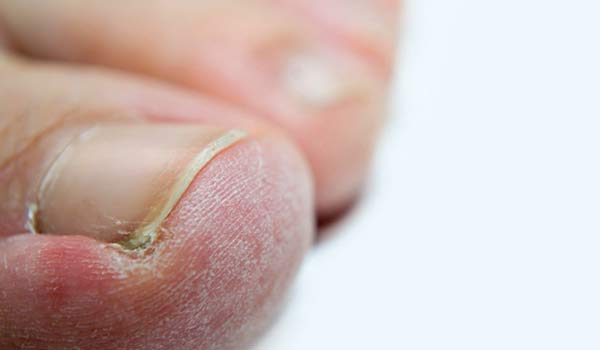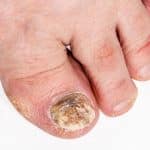Surprisingly, many individuals battling toenail fungus are unaware of the signs indicating that the infection is receding. Recognizing these signals can be crucial in monitoring treatment progress and ensuring effectiveness.
Understanding how to identify if your toenail fungus is dying can provide reassurance and motivation during the recovery process. By being aware of these indicators, you can track improvements accurately and adjust your treatment plan accordingly for optimal results.
Quick Summary
Signs toenail fungus is dying include reduced discoloration, less thickening, smoother texture, and new, healthy nail growth replacing the infected area.
Recognizing Toenail Fungus
Common Symptoms
Identify common symptoms of toenail fungus like discoloration, thickening, and brittleness. Notice any foul odor or debris under the nail. Be aware of potential pain or discomfort around the affected toenail.
Initial Signs
Observe the first signs of dying toenail fungus such as reduced discoloration. Look for the nail texture starting to return to normal. Notice any fading of yellow, brownish, or white streaks on the nails.
Progression Indicators
Monitor the improvement in nail texture from crumbly or thickened to smoother. Watch for the replacement of discolored or fragile sections with healthy nail growth. Track the gradual growth of new, healthy nails replacing the infected ones.
Treatment Approaches
Nail Softening Creams
Nail softening creams with urea and bifonazole can effectively treat toenail fungus. These creams help to soften the nail, making it easier to eliminate the fungus. Look for products specifically designed for nail softening and fungal treatment.
Antifungal Polishes
Consider using antifungal nail polishes containing ingredients like amorolfine or ciclopirox. Applying these polishes once or twice a week can aid in treating the fungus effectively. They serve as a supplementary treatment option for toenail fungus.
Oral Medications
Consult your doctor about oral antifungal tablets such as terbinafine and itraconazole. Following the prescribed dosage is crucial for killing the fungus gradually over several weeks. Be mindful of potential side effects that may arise from oral antifungal medications.
Home Remedies
Experiment with home remedies like tea tree oil, apple cider vinegar, and various essential oils to combat toenail fungus naturally. Mentholated topical ointments can be used as a natural remedy. Combining home remedies with other treatments can enhance results.
Signs of Improvement
Color Changes
Notice changes in nail color indicating the dying process of toenail fungus. Observe fading of yellow, brownish, or white streaks on the nails. Look for the return of a healthy nail color as a sign of improvement.
Texture Alterations
Track improvements in nail texture from crumbly or thickened to smoother. Notice the gradual return of the nail’s normal texture. Be aware of any changes in the texture of the affected toenail.
Growth Patterns
Monitor the growth patterns of new, healthy nails replacing the infected ones. Observe healthy nail growth at the base of the nail as a positive sign. Track the growth progression over time to assess the effectiveness of treatment.
✅ Doctor: If you Have Nail Fungus, Do This Immediately (Watch This)
Monitoring Treatment Efficacy
Regular Assessments
Regularly assess the condition of the affected toenail for any changes. Look for signs like reduced discoloration or a decrease in thickness, indicating the fungus might be dying. Monitor the nail’s texture, as smoother surfaces could signify progress in treatment.
Keep track of improvements or setbacks in the treatment process. Note any unusual symptoms or persistent issues that may require adjustments to your current treatment plan. Document changes to discuss with your healthcare provider during follow-up appointments.
Professional Consultations
Seek professional advice if over-the-counter treatments fail to show results. A healthcare provider can offer guidance on alternate medications or therapies tailored to your specific condition. Consult a doctor for a formal diagnosis and prescription treatments based on the severity of the infection.
Consider dermatologist recommendations for advanced treatments like laser therapy. These specialized procedures can target stubborn fungal infections more effectively, leading to quicker eradication of the fungus. Dermatologists can provide insight into innovative solutions beyond traditional remedies.
Understanding Healing Stages
Early Stage Recovery
Recognize early signs of recovery like reduced discoloration and improved texture. Embrace the fading of yellow, brownish, or white streaks on nails as positive progress. Celebrate as the toenail fungus begins to die, marking the initial stages of healing.
Mid-stage Transformation
Witness nail texture transformation from crumbly to smoother, indicating healing progression. Notice the replacement of discolored or fragile sections with healthy nail growth. Embrace these changes as the toenail fungus moves towards recovery.
Late-stage Healing
Experience the final stages of healing with new, healthy nail growth, symbolizing full recovery. Celebrate the complete replacement of damaged toenails with fresh, healthy growth. Embrace the sight of healthy nail growth at the base as a sign of complete healing.
Nail Care During Treatment
Hygiene Practices
Maintain good hygiene practices to prevent toenail fungus from worsening. Keep feet clean and dry to create an unfavorable environment for fungus. Regularly trim nails and avoid sharing personal items to reduce infection risk.
Protective Measures
Take protective measures like wearing breathable socks and well-fitted shoes. Avoid walking barefoot in public areas to prevent fungal infections. Consider using antifungal powders or sprays to protect feet from fungus.
✅ Do You Have Toe Nail Fungus? Try This Tonight (Watch This)
When to Seek Further Help
Lack of Progress
If treatment for toenail fungus is not showing improvement, consulting a healthcare provider is crucial. Discuss alternative treatment methods with the professional to explore more effective options. Seek guidance to identify the root cause of the stagnant progress.
Worsening Symptoms
Watch out for escalating signs such as heightened pain or spreading infection. Immediate medical intervention is necessary if symptoms worsen. Do not procrastinate seeking help upon observing a decline in the toenail’s condition.
Preventing Recurrence
Environmental Factors
To prevent the recurrence of toenail fungus, consider environmental factors that contribute to its development. Evaluate potential sources of exposure like public swimming pools or communal showers. By being cautious in high-risk environments, you can minimize the risk of toenail fungus.
Personal Habits
Reflect on personal habits that may affect the effectiveness of toenail fungus treatment. Lifestyle changes such as wearing breathable footwear and maintaining good foot hygiene can be beneficial. Adopt healthy habits to support recovery and prevent future fungal infections.
Summary
Now that you know how to recognize toenail fungus, understand the treatment approaches, and spot signs of improvement, you’re well-equipped to monitor the efficacy of your chosen remedy. By comprehending the healing stages and practicing proper nail care during treatment, you can optimize your recovery journey.
Remember, knowing when to seek further help and taking preventive measures are crucial steps in combating toenail fungus successfully. Stay vigilant, be consistent with your treatment, and prioritize your foot health to prevent recurrence.
Remember, your diligence and proactive approach are key to overcoming toenail fungus effectively. Keep following the recommended strategies, stay informed about your progress, and don’t hesitate to consult a healthcare professional if needed. Your commitment to these practices will not only help in eradicating the infection but also in maintaining healthy nails in the long run.
Frequently Asked Questions
How can I recognize toenail fungus?
Toenail fungus appears as yellow or white spots on the nail, causing thickening and brittleness. It may lead to a foul odor and pain in severe cases. If you notice these symptoms, consult a healthcare professional for proper diagnosis and treatment.
What are the signs of improvement in toenail fungus treatment?
Signs of improvement include reduced discoloration, less thickness in the nail, decreased brittleness, and diminished pain or discomfort. Improvement may vary depending on the individual’s response to treatment. Consistency in following the treatment plan is crucial for better results.
What are the different stages of healing for toenail fungus?
The stages of healing for toenail fungus typically involve initial clearing of the infection, gradual improvement in nail appearance and texture, complete eradication of fungal growth, and restoration of healthy nails. Each stage may vary in duration depending on the treatment efficacy and individual response.



